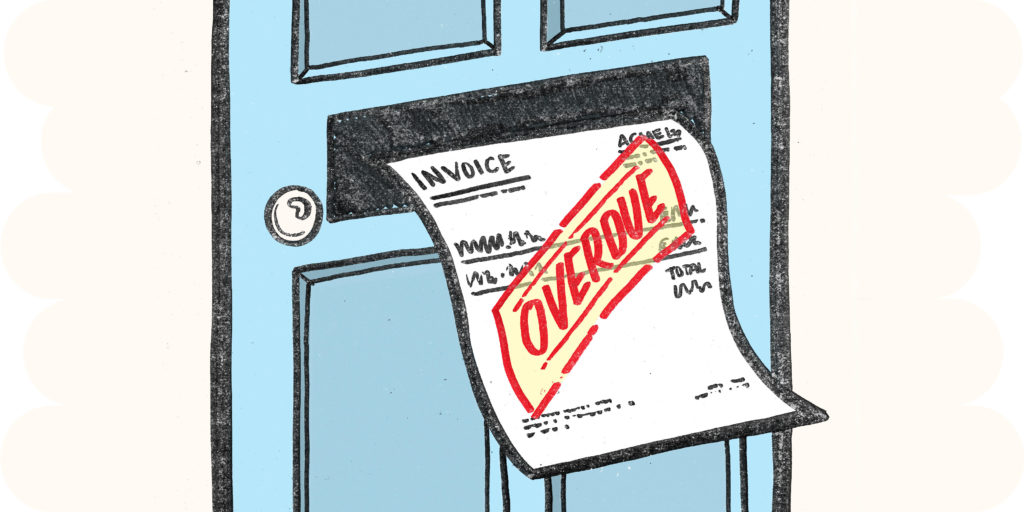When it comes to construction projects, disputes over payment can arise between homeowners and builders. In some cases, homeowners may choose to withhold payment or refuse to pay altogether, which can lead to significant legal consequences. In this blog, we will explore the rights and responsibilities of both builders and homeowners, the legal implications of withholding payment, and the potential consequences for both parties involved.
Understanding these aspects is crucial for maintaining a fair and lawful construction process.
Builders’ Rights:
Builders have certain rights when it comes to payment for their services. These rights are typically outlined in the construction contract, which serves as a legal agreement between the builder and the homeowner. The contract typically specifies the payment terms, including the schedule, milestones, and the consequences for non-payment. Builders have the right to be paid according to the agreed-upon terms and can take legal action to recover unpaid amounts.
In addition to the contractual rights, builders may also have legal protections under local laws or regulations. These protections can vary depending on the jurisdiction, but they generally aim to safeguard builders’ interests and ensure fair compensation for their work. For example, in some jurisdictions, builders may have the right to file a Construction Lien against the property, as mentioned earlier. This allows them to secure their payment by placing a legal claim on the property until the outstanding amount is resolved.
Let’s consider an example to illustrate builders’ rights in the context of non-payment. Suppose a builder enters into a contract with a homeowner to construct a custom home. The contract clearly outlines the payment schedule, which includes a down payment, progress payments at specific construction milestones, and a final payment upon completion. As the construction progresses, the builder completes the agreed-upon milestones and requests payment accordingly. However, the homeowner refuses to make the progress payments, citing minor issues or dissatisfaction with the work. In such a case, the builder may exercise their rights by following the legal procedures outlined in the contract and applicable laws. This may involve providing notice of non-payment, attempting mediation or dispute resolution, and, if necessary, initiating legal action to recover the unpaid amount.
Builders’ rights are essential for protecting their interests and ensuring fair compensation for their work. However, it is crucial for builders to familiarize themselves with local laws and regulations governing construction contracts and payment disputes. By understanding their rights and the proper procedures to assert them, builders can navigate payment issues effectively and seek legal remedies if necessary.
Ultimately, open communication, transparency, and adherence to the terms outlined in the construction contract are key to maintaining a positive working relationship between homeowners and builders. Resolving payment disputes amicably, through negotiation or alternative dispute resolution methods, can help mitigate the need for legal actions and foster a mutually beneficial outcome. It is always advisable for builders and homeowners to seek legal advice from professionals specializing in construction law to ensure their rights and obligations are properly understood and protected.
Customers’ Rights:
Customers’ rights play a crucial role in ensuring a satisfactory construction experience. When hiring a builder for a custom home project, customers have the right to expect professional workmanship, adherence to agreed-upon timelines, and compliance with applicable building codes and regulations. This includes the use of quality materials, skilled labor, and attention to detail throughout the construction process.
In the event that customers encounter issues with the construction that affect the quality, safety, or compliance of the project, they have the right to address these concerns and seek appropriate remedies. This may involve communicating their concerns to the builder, requesting necessary repairs or corrections, or engaging in a dispute resolution process outlined in the construction contract. Customers should document any issues or deficiencies and maintain clear and open communication with the builder to resolve the matter effectively.
However, it’s important to note that withholding payment as a means to address construction issues should not be exercised as it could mean serious legal and financial set backs for the home owner should the builder put a construction lien on their property and home, which could cost tens or even hundreds of thousands of dollars to remove. While customers may feel justified in withholding payment if there are significant unresolved issues, it is essential to consider the legal ramifications of such actions. If customers withhold payment without proper justification or in violation of the contractual terms, they may be in breach of the contract themselves, which can lead to legal consequences and potential damages.
To illustrate this point, let’s consider an example. Suppose a customer notices significant defects in the construction, such as plumbing leaks, electrical issues, or structural concerns. The customer, frustrated with the situation, decides to withhold a portion of the payment until the issues are resolved. However, if the customer withholds payment without clear evidence of substantial construction deficiencies or without following the dispute resolution procedures outlined in the contract, the customer may be in violation of the contractual terms. This could potentially result in serious legal actions initiated by the builder to recover the withheld payment and seek damages.
Therefore, it is advisable for customers to approach construction issues through open communication, document their concerns, and follow the dispute resolution process outlined in the contract. If disputes cannot be resolved amicably, seeking legal advice from professionals specializing in construction law can provide guidance on customers’ rights, legal options, and the best course of action to address the issues effectively.
Legal consequences:
Legal consequences can arise for homeowners who withhold payment without valid reasons. One such consequence is the potential filing of a Construction Lien by builders. A Construction Lien is a legal claim against the property that serves to secure payment for the services rendered by the builder. This Construction Lien can have serious implications for homeowners, as it can hinder their ability to sell or refinance the property until the outstanding payment is resolved.
In addition to filing a Construction Lien, builders may also choose to pursue legal action to recover the unpaid amount. This can involve initiating a lawsuit against the homeowner, which may lead to litigation and further escalate the situation. Legal proceedings can be time-consuming, costly, and emotionally draining for both parties involved. It is important for homeowners to recognize that withholding payment can trigger such legal actions and potentially result in significant financial consequences.
However, it is important to note that builders must also adhere to proper legal procedures and provide the necessary documentation to assert their rights. They must be able to demonstrate that the work has been completed according to the terms of the contract and that any deviations or issues have been properly addressed. Builders have an obligation to fulfill their contractual obligations, provide quality workmanship, and comply with applicable laws and regulations. Failure to meet these obligations may weaken their legal position in seeking payment or enforcing their rights.
To illustrate the potential legal consequences, let’s consider an example. Suppose a homeowner decides to withhold payment from a builder due to minor cosmetic issues that can be easily resolved. If the homeowner fails to provide valid reasons for withholding payment and does not follow the dispute resolution process outlined in the contract, the builder may choose to file a Construction Lien against the property. This action could have significant repercussions for the homeowner, affecting their ability to sell or refinance the property until the lien is satisfied.
In summary, homeowners should be aware that withholding payment without valid reasons can lead to legal consequences. Builders may file a mechanic’s lien and pursue legal action to recover unpaid amounts, which can result in additional costs, time-consuming litigation, and potential restrictions on the homeowner’s property. However, builders must also fulfill their obligations and provide proper documentation to assert their rights. It is important for both parties to engage in open communication, follow the contractual procedures for dispute resolution, and seek legal advice when necessary to mitigate potential legal consequences and ensure a fair resolution.
Dispute resolution:
Dispute resolution is an important aspect of resolving conflicts between builders and homeowners. While litigation is always an option, it is often more time-consuming, expensive, and adversarial. As an alternative, homeowners and builders can explore methods like mediation to find mutually agreeable solutions.
Mediation involves the intervention of a neutral third party, known as a mediator, who assists in facilitating communication and negotiation between the parties. The mediator does not make decisions but instead helps guide the discussion to reach a resolution that satisfies both the builder and the homeowner. This process allows for a more collaborative and constructive approach, where each party can express their concerns and work towards a mutually beneficial outcome.
One of the key advantages of mediation is its cost-effectiveness. Compared to litigation, which involves court fees, attorney expenses, and potentially lengthy legal proceedings, mediation can be a more economical option. The parties share the cost of the mediator, which is typically less expensive than going through a trial. Additionally, mediation can be scheduled more quickly, allowing for a timelier resolution to the dispute.
Another significant advantage of mediation is its potential to preserve the relationship between the builder and the homeowner. In many cases, the construction process involves ongoing collaboration and communication. By engaging in mediation, both parties have the opportunity to address their concerns, express their interests, and work towards a resolution that meets their needs. This can help maintain a positive working relationship and prevent further strain or animosity between the parties.
To illustrate the benefits of mediation, let’s consider an example. Suppose a homeowner and a builder are in dispute over the quality of workmanship in the construction project. Rather than immediately pursuing litigation, they decide to engage in mediation. The mediator helps facilitate a productive dialogue, allowing the homeowner to express their concerns about the workmanship, while the builder explains the steps taken and offers potential solutions. Through open communication and the guidance of the mediator, the parties can reach a resolution that involves rectifying the issues while preserving their working relationship.
Dispute resolution methods such as mediation offer an alternative to litigation for resolving conflicts between builders and homeowners. Mediation provides a cost-effective and timely option that allows both parties to collaborate and find mutually acceptable solutions. By engaging in open communication and exploring mediation, builders and homeowners can work towards a resolution that satisfies their interests while preserving their relationship. It is advisable to consider mediation as a viable option before resorting to the more adversarial process of litigation.
Finding a Path Forward:
To avoid the complications and legal consequences associated with withholding payment, it is crucial for both builders and homeowners to maintain open lines of communication throughout the construction process. Clear communication can help address concerns promptly and resolve any issues that may arise. Additionally, adhering to the terms and conditions outlined in the construction contract can help ensure a fair and transparent payment process.
Conclusion:
In the realm of construction projects, withholding payment from a builder can have significant legal implications for both homeowners and builders. It is essential for both parties to understand their rights and responsibilities, seek appropriate dispute resolution methods, and maintain open communication. By fostering a collaborative and respectful environment, homeowners and builders can navigate potential conflicts and ensure a successful construction process that benefits all parties involved.

